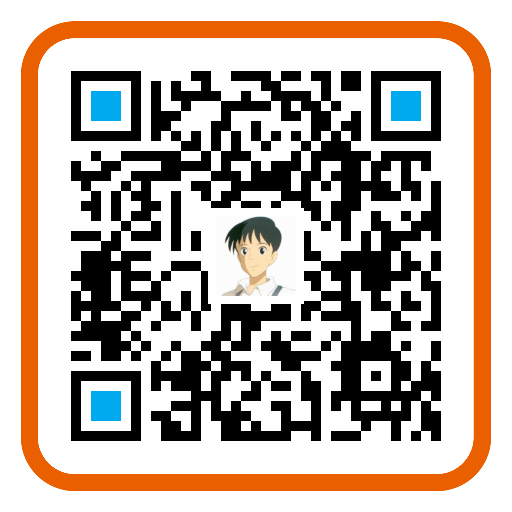这篇论文是 2016 年的 TPAMI,作者 Yunchao Wei 在 Weakly supervised object detection and semantic segmentation 上做了很多很棒的工作,值得 follow 一下。这篇论文在 14 年被放到 arXiv 的时候,还有另外一个名字,CNN: Single-label to Multi-label,而且 arXiv 版本 14 页,内容比 8 页的 TPAMI 版本更加多一些。
1. Problem & Aim
从 CNN: Single-label to Multi-label 这个名字就可以看出来,这篇文章的目的或者说要解决的问题就是怎样让在 single-label image classification 中取得巨大成功的 CNN 能够 copes with multi-label images。
为什么说本文也算弱监督呢?
- 额,其实这有点难说,如果说要 output 的 supervision level 高于 input 的,本文的输入输出都是 label 的话,这个不太好说是弱监督
- 但是,在当时,previous works 都是要 employ ground-truth bounding box information for training 的,而本文不需要
- 另外,从 CVPR-15-Is object localization for free? Weakly-supervised learning with convolutional neural networks 看(这两篇论文关于 max-pooling 这一点contribution 是一样的),本文其实是可以很容易实现 Localization 乃至 Detection 都可以,所以我觉得本文肯定还是属于 WSL 的。
- 对标 R-CNN 好啦,R-CNN 是一个 multi-label classification and detection 方法,做 Detection 的时候,classification 自然也就完成了,或者说对 region 做 classification 的时候,Detection 也就完成了。本文也是对 Region 做 classification,对比 R-CNN 需要的 bounding-box level annotation,本文肯定是弱监督啦。
2. Motivation
2.1 Motivation on Multi-label Image Classification
Multi-label Image Classification 有很大的实际意义,因为 the majority of real-world images are with more than one objects of different categories.
2.2 Motivation on CNN
Convolutional Neural Network (CNN) has demonstrated promising performance in single-label image classification tasks。很自然的想法就是问能不能把 CNN 拓展到 Multi-label Image Classification。
2.3 Motivation on fine-tunning?
也就是说,为什么 pretrained 的 feature 不能直接拿来用,这是因为 different from the single-label image, objects in a typical multi-label image are generally less-aligned, and also often with partial visibility and occlusion。因为跟 single-label 不一样,不对齐,且有遮挡,肯定是场景 match 的特征才好。Therefore, global CNN features are not optimal to multi-label problems.
3. Challenge
但是在当时,注意是 2014 年(R-CNN 也是要到 14 年的 CVPR 上才出现),CNN 还主要是用来做 single-label image classification。在当时,CNN 是没法直接用来做 Multi-label Image Classification 的,难点主要在于:
- Firstly, the implicit assumption that foreground objects are roughly aligned, which is usually true for single-label images, does not always hold for multi-label images. 也就是说对于 single-label 来说,其实是得益于 alignment 这个助力的;而对于 multi-label 来说,因为多个物体可以以多种姿态、多种组合、多个尺度出现,比如 Fig. 1。alignment 根本无从谈起。
- Secondly, the interaction between different objects in multi-label images, like partial visibility and occlusion, also poses a great challenge. 不同的物体之间会有互相遮挡
- 需要的 dataset 很难获取 the burden of collection and annotation for a large scale multi-label image dataset is generally extremely high. 难处具体有一下三点:
- 本身标记 multi-label image 的代价就更大
- due to the tremendous parameters to be learned for CNN, a large number of training images are required for the model training. 本身用 CNN 来做就需要大量样本,现成的 multi-label image dataset 构建很难
- Furthermore, from single-label to multi-label (with n category labels) image classification, the label space has been expanded from n to 2^n , thus more training data is required to cover the whole label space.。更加雪上加霜的是,因为从 single-label 变成了 multi-label,label space 增加了,需要的样本就够多了
那么本文是怎么应对这些 challenge 的呢?
- 对于数据集少,首先是放弃对 bounding box level 的 annotation 的设想,用 image-level label训练。
- 对于数据集少,其次就是 pretraining + fine-tuning。
- 对于 occlusion 和 没有 alignment,这是没办法的事,因为对于 multi-label 来说,本身就是这样的,只能说是没法受益于 alignment 或者 没有 occlusion,倒不是说 multi-label 不可以做。
4. Contributions
私以为本文的 contributions 是 Hypotheses Extraction 和 Cross-hypothesis max-pooling 这两个。
- Hypotheses Extraction
- 其实本文的 Hypotheses Extraction 是 BING + NCUT
- BING 负责 hypotheses (region) proposal,NCUT 负责懂 BING 产生的 hypotheses 中做 hypotheses selection
- 相比于 R-CNN,本文其实是多了这一个 region selection 过程。在 R-CNN 中,通过神经网络后要再做非极大值抑制,有很多的浪费。
- 本文用的 hypotheses selection,其实是一种处理 重叠相近 proposal 的一种手段,对这些 proposal 做 clustering。本文在输入神经网络之前,就大大减少了计算那些之后注定要被丢弃掉的 region,可以大大减少计算资源的浪费,可以说很机智了。
- Cross-hypothesis max-pooling
- 这一点其实跟 CVPR-15-Is object localization for free? Weakly-supervised learning with convolutional neural networks 是重合的,可以去看上一篇笔记 Notes on CVPR 2015 Is object localization for free?,更加详尽。
5. Prior works
Prior works on multi-label image classification 大体可以分为 bag-of-words (BoW) framework 和 deep learning framework 这两类。
5.1 BoW framework
Bag-of-words (BoW) framework 传统的 pipeline 范式咯,a traditional BoW model is composed of multiple modules, e.g., feature representation, classification and context modeling。
5.1.1 Feature representation
Feature representation 又可以分解成以下几步:
- hand-crafted feature extraction,SIFT
- HOG,LBP 是在这一层面的
- feature coding
- Vector Quantization, Sparse Coding and Gaussian Mixture Models 是在这一层面的
- feature pooling
- Spatial Pyramid Matching 是在这一层面的
这样得到的 feature representation 是 global,也就是说是 image-level representation
5.1.2 Classification
有了特征,分类就简单了,主要就是用下 SVM、随机森林这些,对于 multi-label classification 来说,肯定是要有现成的多类分类方案的分类器,且这个多类是不能 mutually exclusive 的。
5.1.3 Context modelling
- the usage of context information, e.g., spatial location of object and background scene from the global view, can considerably improve the performance of multi-label classification and object detection.
- 这点在我以前看到论文里提到的不多,但的确如作者所说,特别是对于多类来说是蛮重要的,context 可以提供不少信息,不能放过了,这一块的论文可以多看看
- 作者给了一些:
- H. Harzallah, F. Jurie, and C. Schmid. Combining efficient object localization and image classification. In Computer Vision and Pattern Recognition, pages 237–244, 2009.
- Z. Song, Q. Chen, Z. Huang, Y. Hua, and S. Yan. Contextualizing object detection and classification. In Computer Vision and Pattern Recognition, pages 1585–1592, 2011.
- O. Russakovsky, Y. Lin, K. Yu, and L. Fei-Fei. Object-centric spatial pooling for image classification. In European Conference on Computer Vision, pages 1–15. 2012.
- Q. Chen, Z. Song, Y. Hua, Z. Huang, and S. Yan. Hierarchical matching with side information for image classification. In Computer Vision and Pattern Recognition, pages 3426–3433, 2012.
- Q. Chen, Z. Song, J. Dong, Z. Huang, Y. Hua, and S. Yan. Contextualizing object detection and classification. IEEE Trans. Pattern Analysis and Machine Intelligence, 2014.
对于用 BoW framework 来做 multi-label classification 的,作者也给了一些文献:
- H. Harzallah, F. Jurie, and C. Schmid. Combining efficient object localization and image classification. In Computer Vision and Pattern Recognition, pages 237–244, 2009.
- F. Perronnin, J. Sanchez, and T. Mensink. Improving the fisher kernel for large-scale image classification. In European Conference on Computer Vision, pages 143–156, 2010.
- Q. Chen, Z. Song, Y. Hua, Z. Huang, and S. Yan. Hierarchical matching with side information for image classification. In Computer Vision and Pattern Recognition, pages 3426–3433, 2012.
- J. Dong, W. Xia, Q. Chen, J. Feng, Z. Huang, and S. Yan. Subcategory-aware object classification. In Computer Vision and Pattern Recognition, pages 827–834, 2013.
- Q. Chen, Z. Song, J. Dong, Z. Huang, Y. Hua, and S. Yan. Contextualizing object detection and classification. IEEE Trans. Pattern Analysis and Machine Intelligence, 2014.
5.2 Deep learning framework
作者给了一些文献,算是同类工作吧,值得看一下:
- M. Oquab, L. Bottou, I. Laptev, and J. Sivic. Learning and transferring mid-level image representations using convolutional neural networks. arXiv, 2013.
- Y. Gong, Y. Jia, T. K. leung, A. Toshev, and S. Ioffe. deep convolutional ranking for multi label image annotation. In International Conference on Learning Representations, 2014.
- A. S. Razavian, H. Azizpour, J. Sullivan, and S. Carlsson. CNN features off-the-shelf: an astounding baseline for recognition. arXiv preprint arXiv:1403.6382, 2014.
此外,作者给了一些早期 transfer pre-trained CNN models 来做其他 task、dataset 的文献:
- J. Donahue, Y. Jia, O. Vinyals, J. Hoffman, N. Zhang, E. Tzeng, and T. Darrell. Decaf: A deep convolutional activation feature for generic visual recognition. arXiv preprint arXiv:1310.1531, 2013.
- R. Girshick, J. Donahue, T. Darrell, and J. Malik. Rich feature hierarchies for accurate object detection and semantic segmentation. arXiv preprint arXiv:1311.2524, 2013.
- M. Oquab, L. Bottou, I. Laptev, and J. Sivic. Learning and transferring mid-level image representations using convolutional neural networks. arXiv, 2013.
- P. Sermanet, D. Eigen, X. Zhang, M. Mathieu, R. Fergus, and Y. LeCun. Overfeat: Integrated recognition, localization and detection using convolutional networks. arXiv preprint arXiv:1312.6229, 2013.
- A. S. Razavian, H. Azizpour, J. Sullivan, and S. Carlsson. CNN features off-the-shelf: an astounding baseline for recognition. arXiv preprint arXiv:1403.6382, 2014.
- Y. Gong, L. Wang, R. Guo, and S. Lazebnik. Multi-scale orderless pooling of deep convolutional activation features. arXiv preprint arXiv:1403.1840, 2014.
6. Method
6.1 Data
- Pre-training 在 ImageNet 上
- Fine-tunning 在 VOC 上,当然测试也是在这个 VOC 上,fine-tunning 的数据集和 testing 的是一样的,因为 fine-tunning 实际就是 training 啊
6.2 Model
本文方法的 Model 分为两部分,一部分是输入 CNN 之前的 Hypotheses Extraction 模块,另一部分就是改动后的 CNN 了。
6.2.1 Hypotheses Extraction
- 在输入网络之前 BING + NCUT,做完 NCUT 后,每个簇都挑 k 个 hypothesis,一共 mk 个,m 是簇数。
- NCUT 需要的 Affinity matrix 是由 region proposal 之间的 IoU 构成的,见公式(1),很巧妙了。
一个好的 hypotheses extraction approach 的标准:
- High object detection recall rate
- 这点其实是由 BING 保证的
- recall rate 是 TP / (TP + FN),也就是 所有 “正确被检索的 item(TP)” 占所有 “应该检索到的 item(TP+FN)” 的比例。
- Small number of hypotheses
- 这点是由 NCUT 筛选保证的
- High computational efficiency
- 这点是要由 BING + NCUT 共同保证的,这两个步都要 efficient
6.2.2 Modified CNN
- 网络逐个输入 hypothesis,也就是一个 proposed & selected 的 region (hypothesis)
- 在 CNN 的输出,进入 最后的 softmax layer 之前要经过一个 cross-hypothesis max-pooling,这点具体看之前的笔记Notes on CVPR 2015 Is object localization for free?,更加详尽。
6.3 Cost function
- Image-fine-tuning on multi-label image set 用的 loss function 是概率向量的 最小二乘
- 每幅图像的这个概率向量计算很简单,这幅图像含有几类目标,向量的对应位置就是几分之一
6.4 Optimization
作者没有多提 Optimization,那应该就是一般性的 stochastic gradient descent 吧。不同层的权重不同,应该 trick 不少,调参很辛苦吧。
如果您觉得我的文章对您有所帮助,不妨小额捐助一下,您的鼓励是我长期坚持的动力。
 |
 |
|---|---|